Place Name: Hiroshima Electric Railway (Hiroden) - 広島電鉄 (広電)
Type: Railway 鉄道
Location: Hiroshima City, Hiroshima Prefecture, Chukoku Region, JAPAN
Distance: 35km
Number of Stations: 83
Homepage: http://www.hiroden.co.jp/en/
On the inner city lines, with the exception of the Hakushima Line, a flat rate fare of ¥150 is charged upon exiting the train. The Hakushima Line is only ¥100 per ride. Transfer tickets are available. From Nishi-Hiroshima to Miyajima-guchi a fare based on distance is charged and boarding slips are available on the train or from machines at the station. For those who live in the city there is an IC card called PASPY that also can be used on some busses and JR West trains. For tourists there are two one-day passes. The first covers all the trains for ¥600 and second covers trains and the Miyajima ferry for ¥840. A two-day pass for ¥2,000 offers trains, ferry and ropeway access. Remember to run the card through the reader when you get on and when you get off the train.
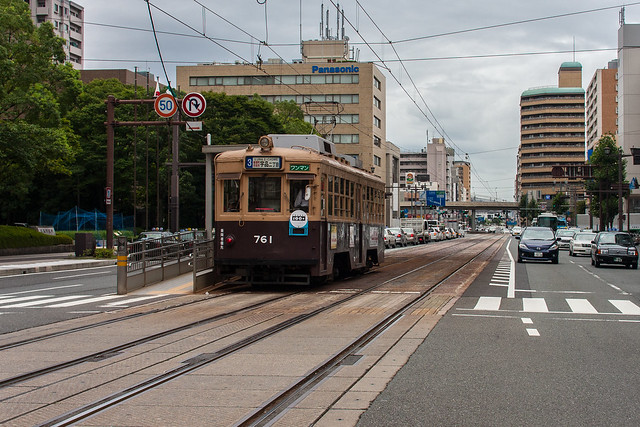 |
| Shiyakusho-mae Station [市役所前駅] |
Hiroshima Electric Railway, or Hiroden [広電] as the locals call it, is Japan’s largest and most used streetcar system. There are eight routes on seven lines using a total of 35km of track. 18.9km of Hiroden’s track lies in the middle of the road with the normal traffic. This section of the track is called the “inner city lines” [市内線]. The remaining 16.1km from Hiroden Nishi-Hiroshima Station [広電西広島] to Hiroden Miyajimaguchi Station [広電宮島口] is called the Miyajima Line [宮島線]. It runs free from traffic on its own right of way. Leaving Hiroshima Station, one can ride all the way to Miyajimaguchi without changing trains passing a total of 40 stations and taking just over an hour. This is the red #2 line. The newest and largest trains run this line.
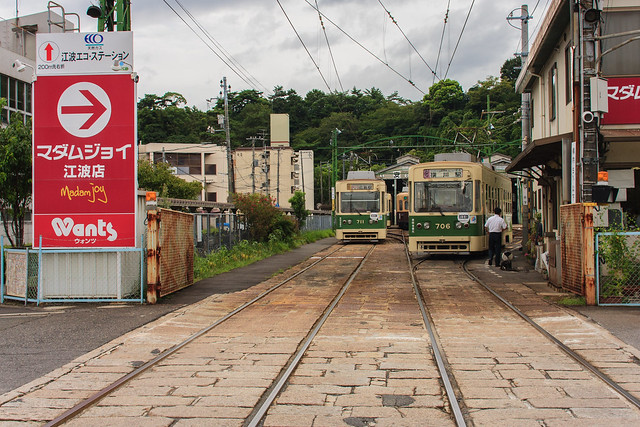 |
| Eba Station [江波駅] |
The company also owns a hotel in the city, operates city bus lines, and holds stock in other transportation companies including the Miyajima Matsudai ferry. Hiroshima is one of Japan’s most visited locals outside of Tokyo and Hiroden competes with JR for foreign tourists to the city and Miyajima. They offer a two day one night tourist package that includes the streetcars, ferry, Miyajima Ropeway, hotel stay with some meals for $130 which is not a bad idea if you plan on visiting.
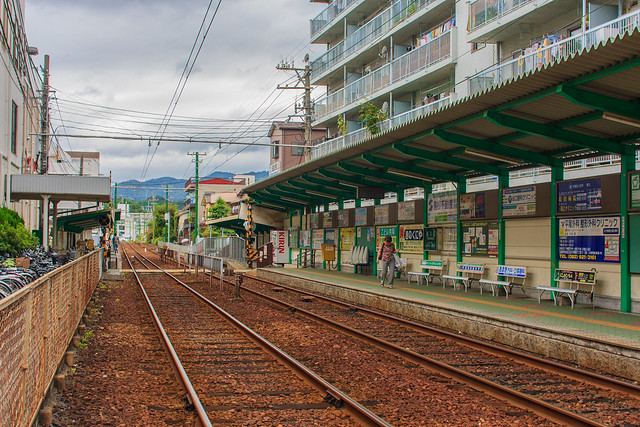 |
| Rakurakuen Station [楽々園駅] |
Hiroden has purchased and maintains old train cars from other city’s streetcar operators. Some of which are now defunct. Cars from Tokyo, Kobe, Osaka, and Hanover, Germany are still in operation on Hiroden’s inner city lines. Two very special cars that survived the atomic bomb blast in 1945 also still run on the lines.
The beginnings of the Hiroshima street car began 100 years ago thanks to a plan to reclaim the land once used by the moats around Hiroshima castle. As the city grew and modernized through the Taisha era more lines and routes were planned. Ten years after it’s foundation in 1922 the Miyajima Line was opened.
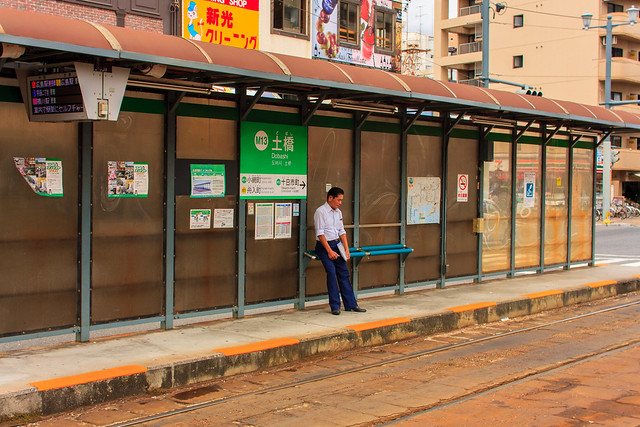 |
| Dobashi Station [土橋駅] |
As the Pacific War became the Second World War more and more stresses were put upon the railway. Soon most of the able bodied men working as drivers and conductors were conscripted into military service. Women were soon trained to take the men’s places on the trains and busses. Under orders from the government a new line was made to the port to support the military.
The atomic bomb was dropped on Hiroshima on August 6th, 1945. 185 students and teachers Hiroden’s girls school perished and 266 others were injured. Of the 123 cars in operation at the time 108 were destroyed. Despite the massive losses in infrastructure, one section of the line was running only 3 days after the bombing.
By 1947 most of the lines were restored to service. Into the 1950s Hiroden modernized the rolling stock and the readjusted of the lines to match the postwar reconstruction of the city. In the late 50’s the Miyajima ferry and ropeway begun operation. Hiroden then expanded into highway buses and land development through the 80s. 1997 brought about new trains as urban transit was undergoing a global resurgence. From the 90’s to today Hiroden has been rebuilding, modernizing stations, and improving accessibility where possible.
I found the lines to be a pleasure to ride. The terminal stations, especially Hiroshima Port Station [広島湾], are well designed and each is unique. The difference in ride among the many types of trains was enjoyable especially for fan like myself. While modern in parts, there are many old and retro sections of the track. The section between Dobashi [土橋] and Hiroden Nishi-Hiroshima [広電西広島] in particular.
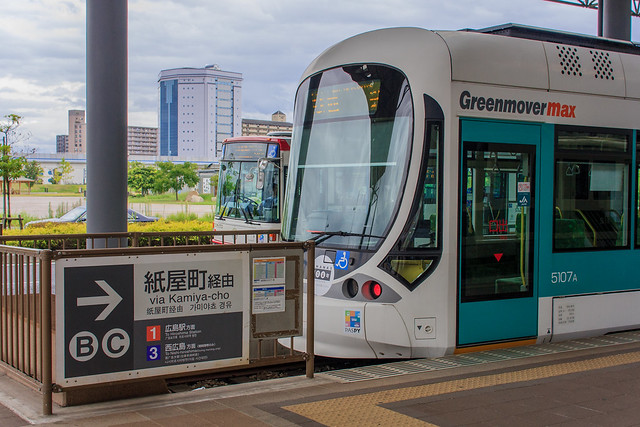 |
| Hiroshima Port Station [広島湾] |
(Most of the information about the history of the company was taken from the history on Hiroden’s own website commemorating their 100th anniversary.)
 |
| The one day trip card |
EveryTrail - Find the best hikes in California and beyond
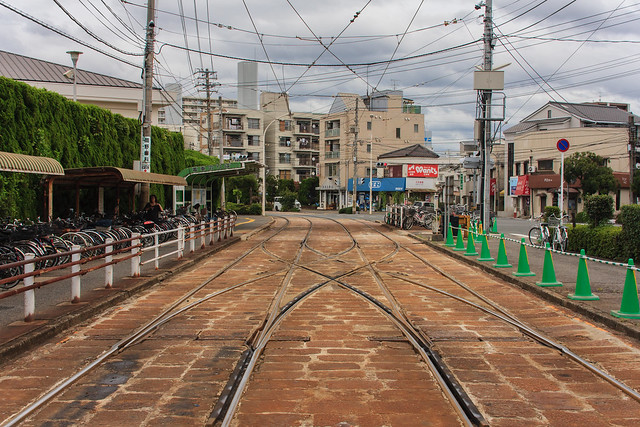
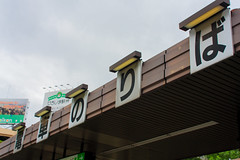
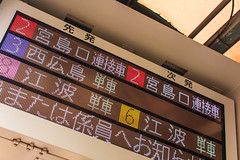
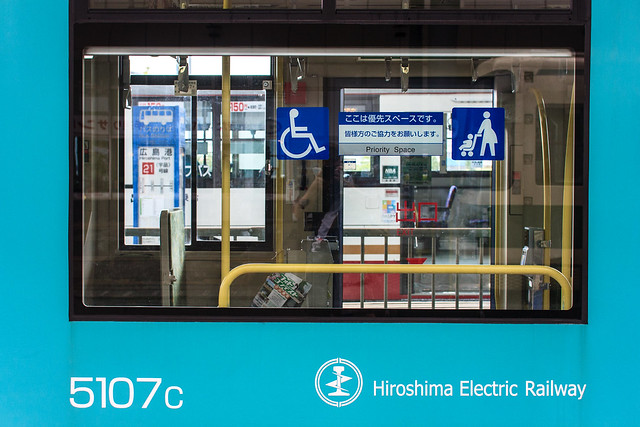

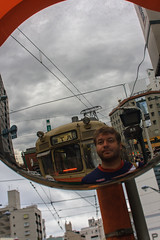




No comments:
Post a Comment